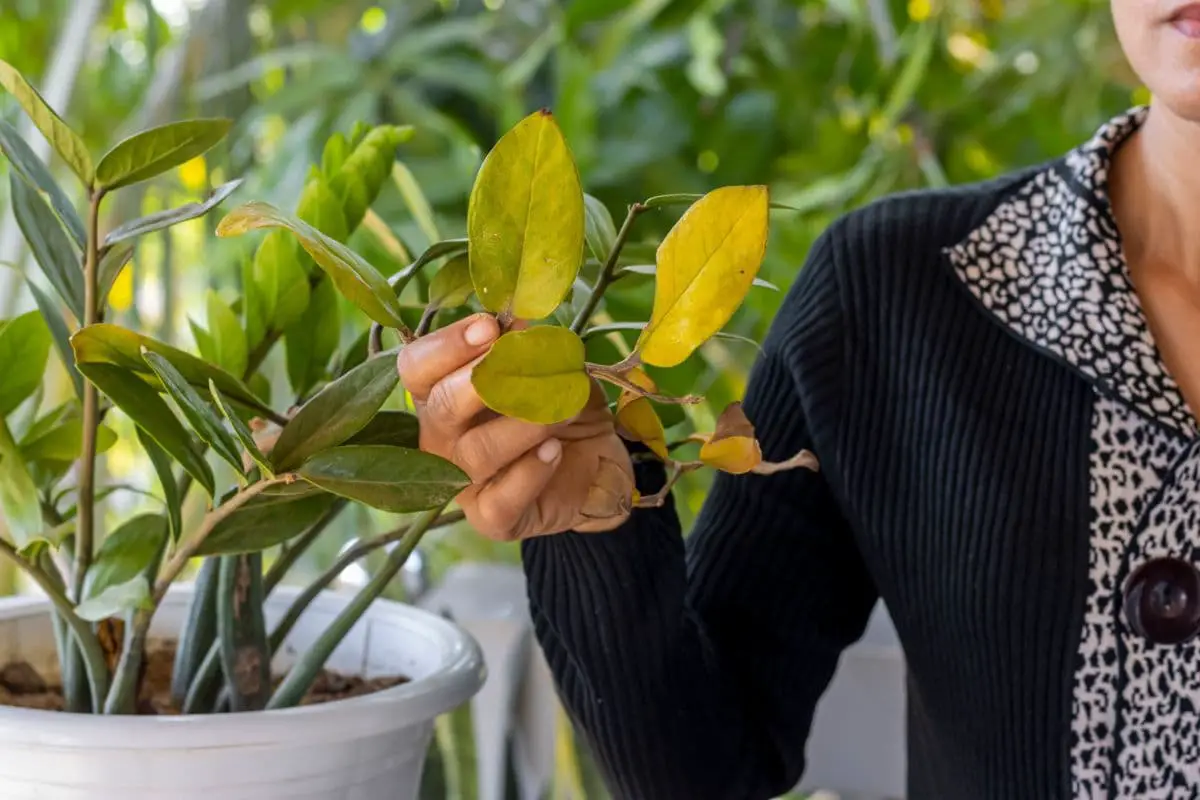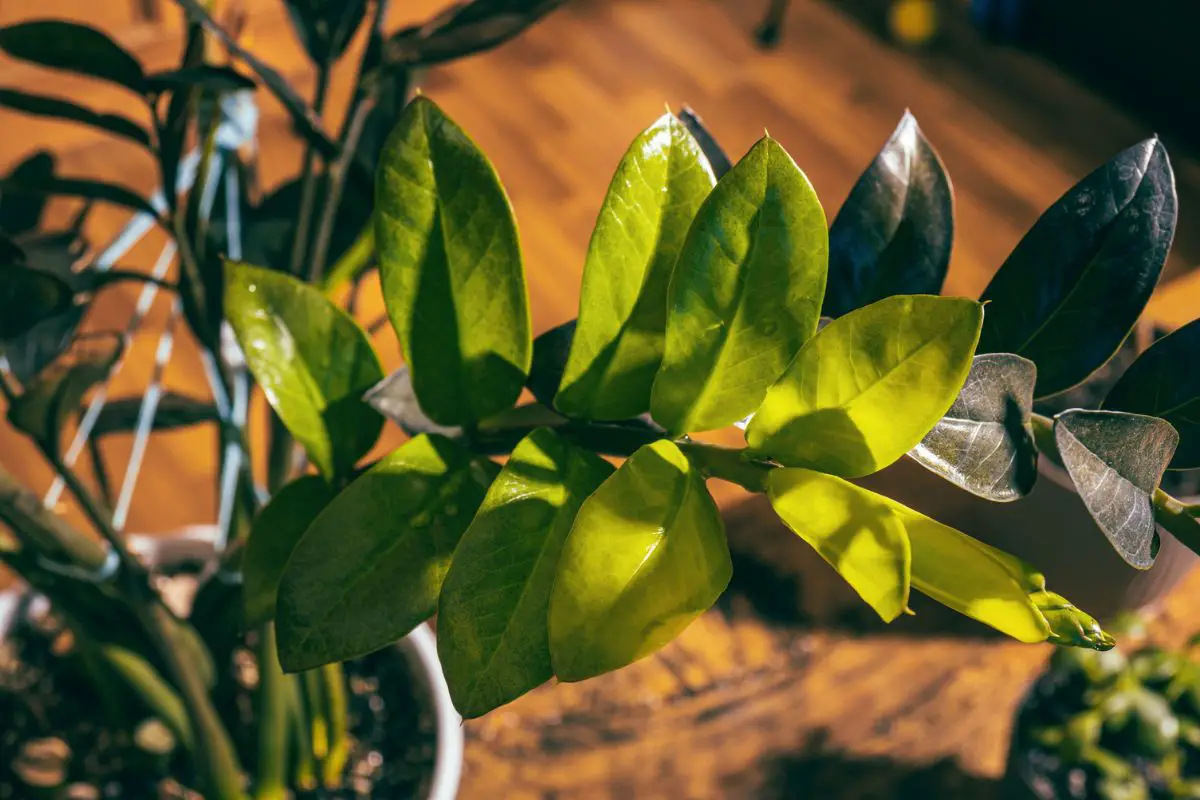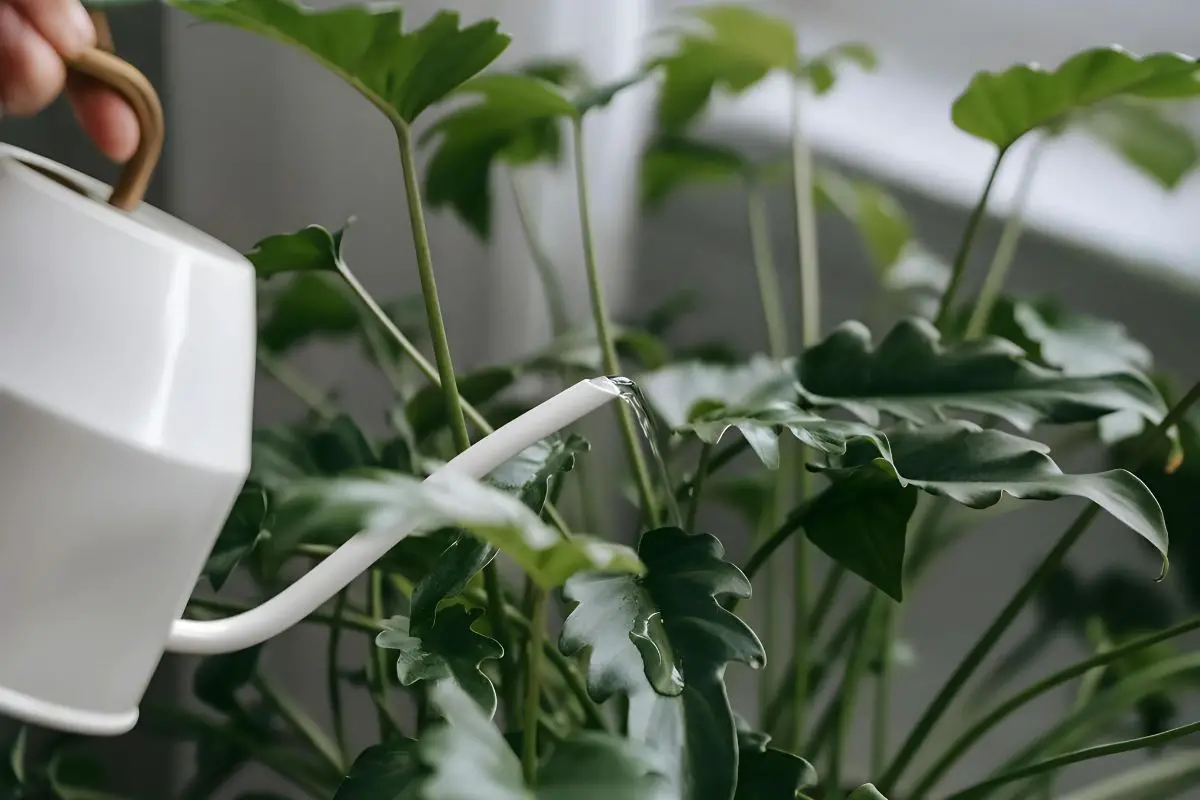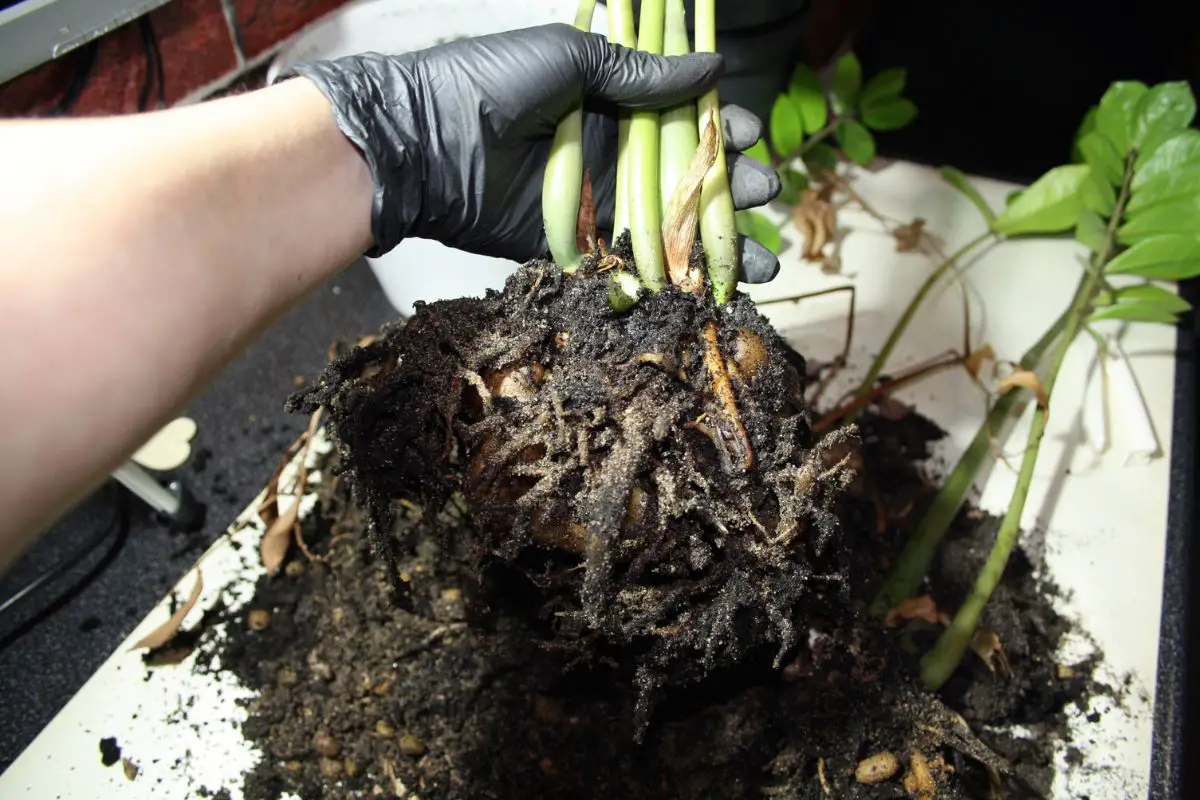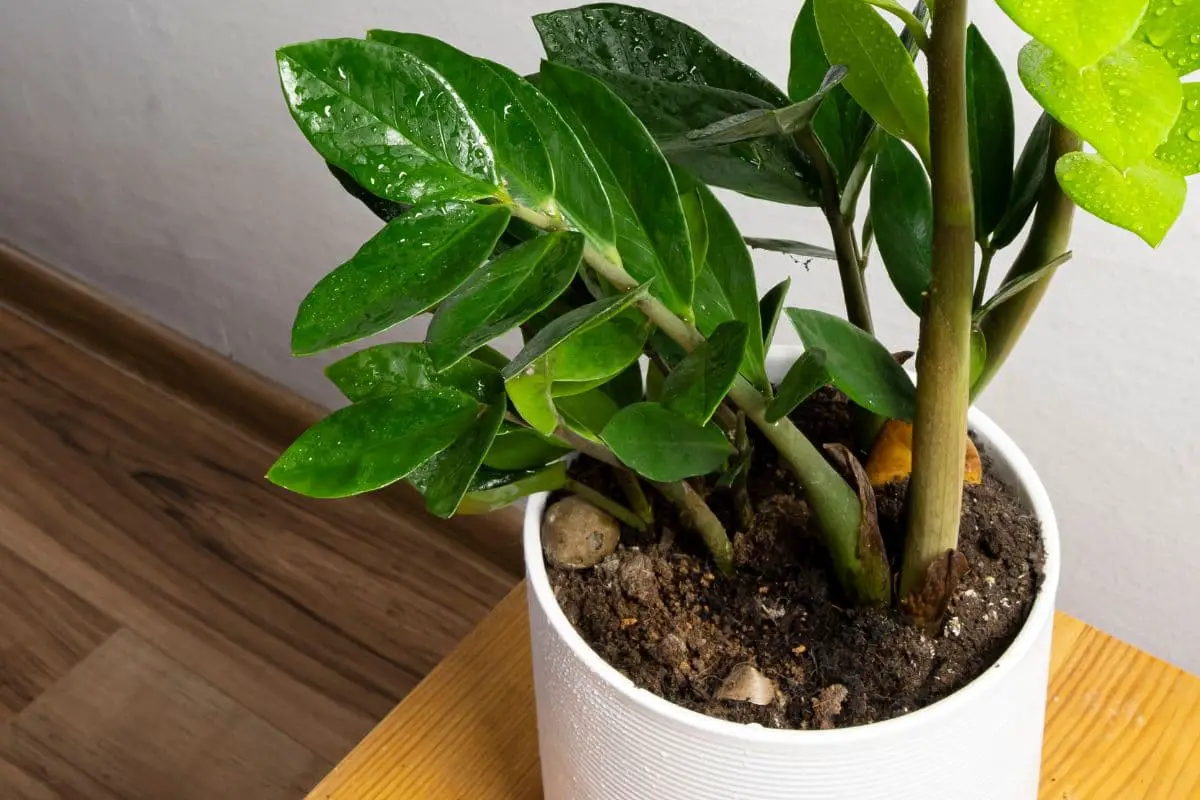ZZ plants (Zamioculcas zamiifolia) are tropical flowering plants. They’re more popular for their glossy leaves because the flowers are not showy and they rarely bloom when grown in pots indoors. Due to their rarity, the flowers are often associated with excellent care practices and good fortune.
ZZ plants typically bloom toward the end of the rainy season or around summer or early fall in US homes. The rhizomes need enough energy and nutrients from fertilizers to support the flower buds. Proper watering with wet and dry cycles will then give them the seasonal cue to bloom.
The rest of the article will discuss everything you need to know about ZZ flowers and how to encourage your plant to produce them.

ZZ Plant Flowers: An Overview
ZZ plants are slow-growing perennials that can take three years or so to mature when grown from stem or leaf cuttings. They may reach maturity even more slowly when kept in lower light conditions with less frequent watering.
Here are some facts about ZZ plant maturity and flowering:
- Mature ZZ plants bloom when the rainy season is drawing to an end. They require warm temperatures and sufficient moisture to boost the metabolic activities necessary to generate food and energy to develop the flowers.
- The flowers are odorless and consist of a 2-inch (5 cm) white or cream spadix and a yellowish-green spathe. The short stems sprout from the rhizomes and the flowers bloom close to the soil surface.
- ZZ plants are members of the Araceae family similar to peace lilies. Their flowers have similar structures, but peace lilies are more showy and more likely to bloom indoors.
- The flower attracts pollinators and the boat-shaped spadix traps them in. There isn’t sufficient research about this process, so it’s unusual to propagate them through seeds. They’re commonly propagated through stem or leaf cuttings or bulb divisions.
- ZZ plants are unlikely to produce flowers even in the wild if they grow in nutrient-poor sandy soil. Coarse or pale-colored soils tend to contain less phosphorus, which is crucial for flowering.
- Those growing close to riverbanks bloom more often due to darker, richer soil. Similarly, ZZ plants grown in pots with high-quality and nutrient-rich potting mix will have better chances of bearing flowers.
I hadn’t seen a ZZ flower until my plant was over five years old. The larger rhizomes (about 2 inches or 5 cm in diameter) were more likely to produce flowers when kept at optimal conditions and with proper fertilization.
With appropriate care, ZZ plants bloom annually from summer to early fall.
In Asian culture, these flowers symbolize good fortune. If it’s your first time seeing them, it means you’ll be offered a profitable career change or promotion. But if the flowers keep coming every year, it indicates continuous prosperity.
Blooming: Conditions and Process
ZZ plants have vibrant and glossy leaves, which are relatively easy to maintain because they require little maintenance.
However, seeing the flowers bloom is such a rewarding experience because it means you’re doing a great job as a gardener.
Ideal Conditions and Care Tips for Blooming
Consistency in providing optimal conditions is necessary to ensure ZZ plants bloom. Here are the environmental conditions to maintain:
- Light: ZZ plants do best with 8 hours of bright, indirect light daily. You can place your plant 4-8 feet (1.2-2.4 m) from an eastern window. They require balanced lighting conditions to promote flowering. Conversely, they’re less likely to bloom in low or extreme light conditions.
- Water: Replicating the rainy and dry season in their native habitat with better consistency will increase the probability of flowering. Water your ZZ plant once every 2-3 weeks in spring, every 10-14 days in summer, and every 4-6 weeks from mid-fall to winter. Avoid over- or underwatering your plant because stress can stunt flower development.
- Soil: ZZ plants require loose, well-draining soil with nutrients to produce flowers. Use a high-quality succulent mix infused with nutrients or make a homemade blend of equal parts compost and perlite.
- Temperature: Maintain moderate temperatures around 75 °F (24 °C) from spring to early fall and gradually reduce it to 60-65 °F (15.6-18 °C) in winter. The less frequent watering and lower temperatures will trigger self-preservation mode and your plant will grow more slowly.
- Humidity: Maintain the humidity at 40-50% all year round for optimum plant health. Ensure proper airflow to prevent pest infestation, which can stress your plant and prevent flowering.
- Fertilizer: Apply a balanced 10-10-10 slow-release fertilizer in early spring to prompt growth spurts. Switch to bone meal or a 0-5-5 slow-release fertilizer in late spring or early summer to promote flowering. You can also use a half-strength 0-5-5 liquid fertilizer once a month from late spring to mid-summer (2-3 months). Be mindful of your plant and pot size to avoid overfeeding.
- Pruning: In spring, cut down old, yellowing or browning stems and leaves in spring to make way for new foliage and flowers.

The Blooming Process
With the seasonal adjustment in watering and temperatures discussed above, you can mimic the wet and dry cycle in a ZZ plant’s native habitat in US homes. This will prompt them to enter growth spurts in spring and summer, speeding up their maturity.
With appropriate care adjustments, your plant will produce flower buds that look similar to young leaf buds. If your plant has numerous leaf stalks, the flowers may even go unnoticed.
You can distinguish the flowers with the following indicators:
- Flower buds have thinner stems or stalks.
- The singular spathe slowly unfurls to reveal a spadix flower.
- The flower stalk gradually bends downward once it reaches around 2-3 inches (5-7.6 cm) because of the weight of the flower head.
The flowers and stalks may last up to a month before hanging limp and drying out. You can prune them as they dry out to keep the soil surface free of debris and remove any potential hiding spots for pests.
Common Problems Affecting Blooming
Here are some common issues to watch out for:
Overwatering
ZZ plants naturally require more moisture in spring and summer due to brighter light and warmer temperatures. Adequate water is also crucial for fertilizer breakdown, nutrient absorption, and flower development.
It’s easy to overdo for enthusiastic beginner gardeners. However, remember that ZZ plants are drought tolerant and highly susceptible to root rot when kept in soggy conditions.
Plants with signs of rot are unlikely to bloom. To help the plant recover, it’s best to treat the rot, repot the plant in fresh soil, and improve your care routine.
On the other hand, you can prevent overwatering with the following tips:
- Check the soil moisture using a wooden chopstick before watering. During spring and summer, the soil should be dry halfway through before watering. On the other hand, in winter, you can wait until the upper ⅔ is dry before watering.
- Water the soil from the top until the excess drips from the drainage holes. Leave the pot over a drip tray and allow the excess water to drain completely. This ensures that the soil is evenly saturated but not soggy.
Over-Fertilization
Too much fertilizer can cause fertilizer burn and leaf scorch. The excess salts can draw moisture out of the roots and bulbs, dehydrating the leaves, which may then droop, wilt, or turn brown and crisp.
Here are some tips for proper fertilizer applications:
- Cover exposed bulbs with fresh soil mix. Keep the bulbs and roots an inch (2.5 cm) below the soil surface to prevent direct contact with the slow-release granules.
- Spread a thin layer of granular fertilizer or bone meal over the soil surface while keeping the particles at least ¼ inch (0.6 cm) away from the stems.
- Water the soil evenly from the top to activate the fertilizer and leach the excess out of the drainage holes.
- Dilute liquid fertilizers to half the recommended strength to avoid fertilizer burn.
Pest Infestation
A well-maintained ZZ plant has excellent resistance to most common houseplant pests. However, if your plant is stressed due to overwatering or over-fertilization, it may become vulnerable to pest infestations.
Here are the pests that may attack your stressed ZZ plant:
- Sap-feeding insects like aphids, mealybugs, and scale mites will take advantage of the excess moisture in the plant leaves and stems.
- Moisture-loving pests like fungus gnats may lay eggs on soggy soil. The larvae will then feed on the ZZ plant roots and rhizomes.
Treat and prevent pest problems with these methods:
- Spot-remove pests using tweezers or a cotton swab with alcohol and drop them in soapy water.
- Spray your plant with neem oil solution once a week (ideally after sunset) until all pests are eliminated. Continue the application every two weeks for prevention.
- Address pest problems in neighboring plants as well to prevent recurrence.
- Avoid overwatering your plant to deter fungus gnats from laying eggs over the soil.
- Remove plant debris, such as fallen leaves and spent flowers, to eliminate potential hiding spots for pests.
Troubleshooting Non-Blooming Plants
ZZ plants are famous for their tolerance to drought and low light. Although they can survive such conditions, they won’t be able to produce flowers.
That said, your regular low-maintenance care for ZZ plants isn’t enough to promote blooms.
It may be too late to see flowers this growing season, but proper adjustments in your care routine can encourage flowering in the following years.
Here are some changes to consider:
- Move ZZ plants located in a dark corner to a slightly brighter location. For instance, pots sitting next to a northern window will do better in a spot about 4 feet (1.2 m) from an eastern window.
- Don’t let the soil become bone-dry between watering. The soil may become hydrophobic and fail to properly rehydrate your plant despite increasing the watering frequency.
- Fertilize your plant in the years between repotting. The supplemental nutrients will help nourish your plant with enough resources to create and support flowers.
Be patient with your improved care practices because ZZ plants are slow growers. It takes three years or so of consistent ideal conditions for them to bloom.
Final Thoughts
ZZ flowers are a rare but rewarding sight because they show how well you’ve been caring for your plant.
Although generally known for their low-maintenance needs, ZZ plants won’t produce flowers with minimal care. To promote flowering, it’s crucial to maintain optimal environmental conditions and make appropriate seasonal adjustments in your care routine.
Refer to the tips discussed in the article to improve your chances of seeing the auspicious ZZ flowers. Be patient with these slow-growing plants and observe them carefully to ensure they’re in great shape.
Reach out or leave a comment if you have questions or success stories to share about ZZ plant flowers.

